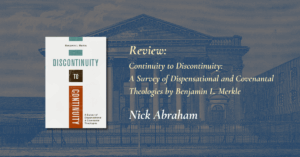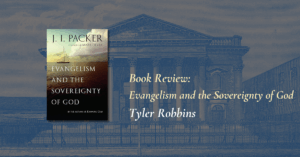Crisp, Oliver. Approaching the Atonement: The Reconciling Work of Christ. Downers Grove, IL: IVP Academic, 2020. 208 pages. Paperback. 978-0-8308-5197-3. $22.00.
Oliver Crisp (DLitt, University of Aberdeen, PhD University of London), Professor of Analytic Theology at the University of St. Andrews, is well-regarded for his thoughtful analysis, clear writing style, and ability to ask probing questions. Having published extensively on Trinitarian theology and Christology, his newest work, Approaching the Atonement: The Reconciling Work of Christ, is a wide-ranging reflection on the work of Jesus at the cross. Rather than a book primarily examining the biblical or historical data, Crisp is concerned with ideas, and in particular, the mechanism of atonement. This is not to say that Approaching the Atonement is a work of speculative theology; Crisp is obviously intentional about being tethered to historical and biblical considerations. The various “accounts” of atonement that have been offered throughout the history of the church, ranging from the patristic era to the present age, gives the book its basic structure. These various ways of accounting for the reconciling work of Christ will be familiar to anyone who has read anything about the atonement. Crisp is at his most helpful in outlining the various objections that could be raised against each viewpoint, while still suggesting possible ways around these difficulties.
Crisp’s interaction with the various accounts of atonement could be characterized by two words: Curious and Fair. ‘Curious’ because Crisp writes as a theologian who is interested to learn what he can, not as a theologian seeking to dogmatically defend a particular tradition. ‘Fair’ because Crisp is concerned to present an accurate picture of each approach. While he does not engage in extensive quotations, his summaries and explanation of the underlying logic of each approach would surely be recognized by the various proponents. This fairness does not mean that Crisp forms no opinions; certain theories he deems as inadequate and others—such as moral exemplarism or Christus Victor—he concludes are not complete doctrines of the atonement at all.
In the final chapter, Crisp offers his own proposal for consideration. His own view, what he calls the “union account,” circumvents what he sees as the serious issues with the direct imputation of guilt, the suffering of an innocent in place of the guilty, and the idea that God directly punishes Christ. These objections will be familiar to readers of Crip’s earlier works on Christology. The way forward, according to Crisp, is to think of atonement less in terms of individualistic imputation of guilt and righteousness, and more as something that happens at the level of humanity, represented by two streams: Adam and Christ. Christ taking on the consequences of sin and transferring his righteousness to us is not the result of a “legal fiction” wherein God simply “pretends” that justice has been done. Rather, Christ, as the first member of a new humanity, “becomes sin” by virtue of participation with sinful humanity, who are in turn redeemed through their union with Christ as the one who atoned for their sins. It is as if we really died in Christ.
As someone who holds to penal substitutionary atonement within a confessional, covenantal framework, I did not feel that Crisp’s account of the atonement differs from my own view as much as he himself seems to think it might. Individualistic accounts of penal substitutionary atonement that conceive of it in primarily economic terms (bank accounts, money), such as might be found in popular-level evangelical rhetoric, would certainly fall under his critiques. However, union with Christ as a mechanism for atonement has always been emphasized in my own Reformed Baptist churches, and throughout the Reformed tradition. John Calvin himself wrote:
Therefore, that joining together of Head and members, that indwelling of Christ in our hearts—in short, that mystical union—are accorded by us the highest degree of importance, so that Christ, having been made ours, makes us sharers with him in the gifts with which he has been endowed. We do not, therefore, contemplate him outside ourselves from afar in order that his righteousness may be imputed to us but because we put on Christ and are engrafted into his body – in short, because he deigns to make us one with him.[1]
Thus, in my reading of his “union account” I find much to sharpen my own articulation of penal substitutionary atonement within a covenantal framework. If anything, Crisp’s work highlights the necessity of carefully articulating our doctrine of atonement and keeping an eye on the various ways we can go wrong. Taking Crisp seriously here can keep us from excusing terrible and unjust versions of atonement as “just the way it is.”
This is a text ideally suited for the classroom, particularly as a supplemental text. That budding theologians are the target audience of this book is confirmed by the inclusion of a basic Further Reading list at the conclusion of each chapter, as well as a short glossary of terms at the conclusion of the book. This is not a book of intimidating scholarship; rather, it struck me as an extended version of what might ensue if a fortunate undergraduate student were to find Crisp in a pub and ask him his thoughts on the atonement. This does not mean that it is not challenging or worth reading for those who have been thinking about the atonement for a while; I found it to be an enjoyable, stimulating read. Where I disagreed with Crisp, it felt as an invitation to further conversation, rather than a challenge. While it is not a comprehensive or even sufficient introduction to the topic, Approaching the Atonement accomplishes exactly what Crisp identifies as his goal in the introduction: it provides a guide to those who are thinking through the difficult issues raised by the atonement. Crisp’s clear writing and imaginative prose, unencumbered by the polemic fervor or angst underlying so many texts on the atonement, invites the reader to integrate the best features of each approach into their own thinking.
Editors Note: The London Lyceum confesses the 2LCF. If the content of the book rejects the 2LCF at any point, we find reasons for concern and the need for revision. However, it is not the mission of the London Lyceum to always publish work that agrees with our confession of faith. We seek to generate thinking and foster an intellectual culture of charity, curiosity, critical thinking, and cheerful confessionalism.
[1] Calvin, Institutes, 3.11.11. Italics added for emphasis.
Author
-

Jacob Denhollander lives in Kentucky with his wife Rachael and four kids and is a member of the Reformed Baptist Church of Louisville
View all posts



